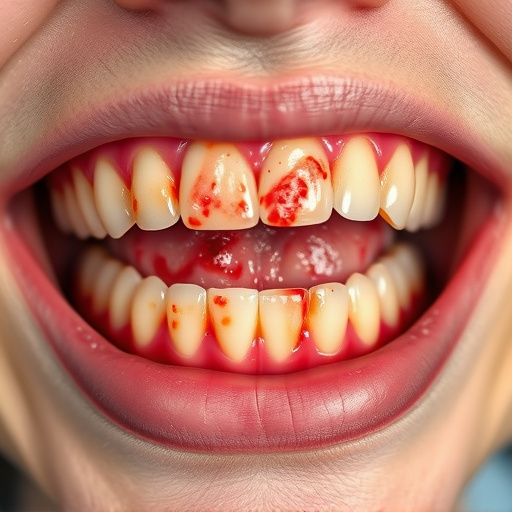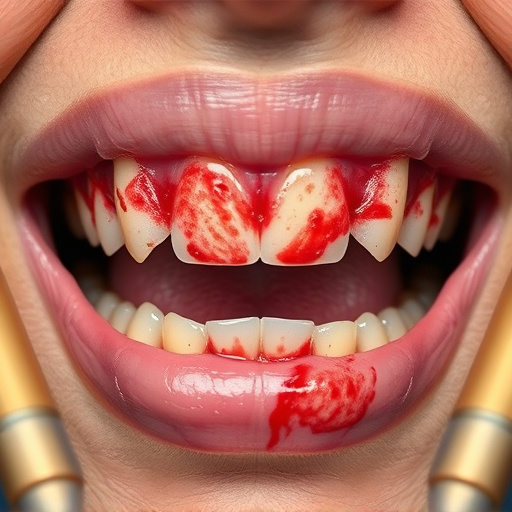Root canal treatment, a common dental procedure, saves infected or damaged teeth by removing contaminated pulp, cleaning and sealing the inner chamber, and preventing further infection. Modern techniques prioritize patient comfort with local anesthetics and advanced tools for precise navigation. Proper aftercare, including clean habits, hydration, soft foods, and clear aligners, ensures healing and facilitates future cosmetic procedures like fillings or veneers.
Experience minimal discomfort with modern root canal treatment. This procedure, while often misunderstood, is designed to save infected or damaged teeth. By removing the infected pulp and cleaning the tooth’s internal chambers, root canal therapy can prevent further decay and restore oral health. Modern techniques, including advanced anesthetics and precise instruments, make the process more comfortable than ever. Learn how to navigate aftercare and promote a smooth recovery in our comprehensive guide.
- Understanding Root Canal Treatment: The Process and Its Purpose
- Minimizing Discomfort: Modern Techniques for a More Comfortable Experience
- Aftercare and Recovery: Tips for a Smooth Road to Healing
Understanding Root Canal Treatment: The Process and Its Purpose

Root canal treatment is a common dental procedure aimed at saving infected or damaged teeth. The process involves removing the infected pulp from the tooth’s inner chamber, cleaning and shaping the space, and sealing it to prevent further infection. This treatment is often recommended when a tooth’s pulp becomes inflamed or infected due to decay, trauma, or crack. Without proper treatment, the infection can spread to the surrounding tissues, leading to severe pain and potential loss of the tooth.
The primary purpose of root canal treatment is to alleviate pain and restore the function of the affected tooth. During the procedure, a dentist carefully accesses the tooth’s pulp chamber through a small opening in the crown. The infected pulp is then removed, and the root canal is cleaned and rinsed to remove bacteria and debris. After ensuring the area is free from infection, the canal is filled with a special material to prevent further decay, and often, a dental crown is placed over the treated tooth to restore its strength and appearance, providing comprehensive dental care.
Minimizing Discomfort: Modern Techniques for a More Comfortable Experience

Root canal treatment has evolved significantly over the years, focusing on providing patients with a more comfortable experience. Modern techniques and advanced technologies are now available to minimize discomfort during this crucial procedure. One of the key advancements is the use of local anesthetics that ensure the area around the tooth is numbed, reducing any sensation of pain. This allows for a smoother process, enabling dentists to work precisely without causing undue distress to the patient.
Additionally, dental professionals employ advanced tools and equipment that enable them to navigate the intricate channels inside the tooth with greater ease. These innovations result in faster and more efficient root canal treatments, often making it comparable to receiving comprehensive dental care, including children’s dentistry or general dentistry procedures. Such advancements not only contribute to a better patient experience but also ensure the long-term health of teeth and gums.
Aftercare and Recovery: Tips for a Smooth Road to Healing

After your root canal treatment, it’s important to take some time to care for yourself and allow the area to heal properly. Start by following any specific aftercare instructions provided by your dentist. This may include keeping the treated area clean and avoiding certain foods or activities that could irritate the site. Staying hydrated and eating soft, cool foods can help ease discomfort.
In addition to these basic tips, consider using clear aligners for a few days after the treatment as they provide a protective barrier, reducing the risk of infection and further irritation. If you’re considering cosmetic dentistry options such as cosmetic fillings or veneers in the future, maintaining good oral hygiene throughout your recovery will ensure that these procedures can be performed effectively with minimal disruption from recent dental work.
Root canal treatment has long been associated with discomfort, but modern techniques have significantly improved patient experiences. By understanding the process and leveraging advanced technology, today’s root canal treatments can be virtually painless. With proper aftercare, healing is swift, allowing you to regain comfort and confidence in your smile. Remember, seeking prompt dental care for infected teeth is essential, and root canal treatment offers a gentle, effective solution to restore oral health.














